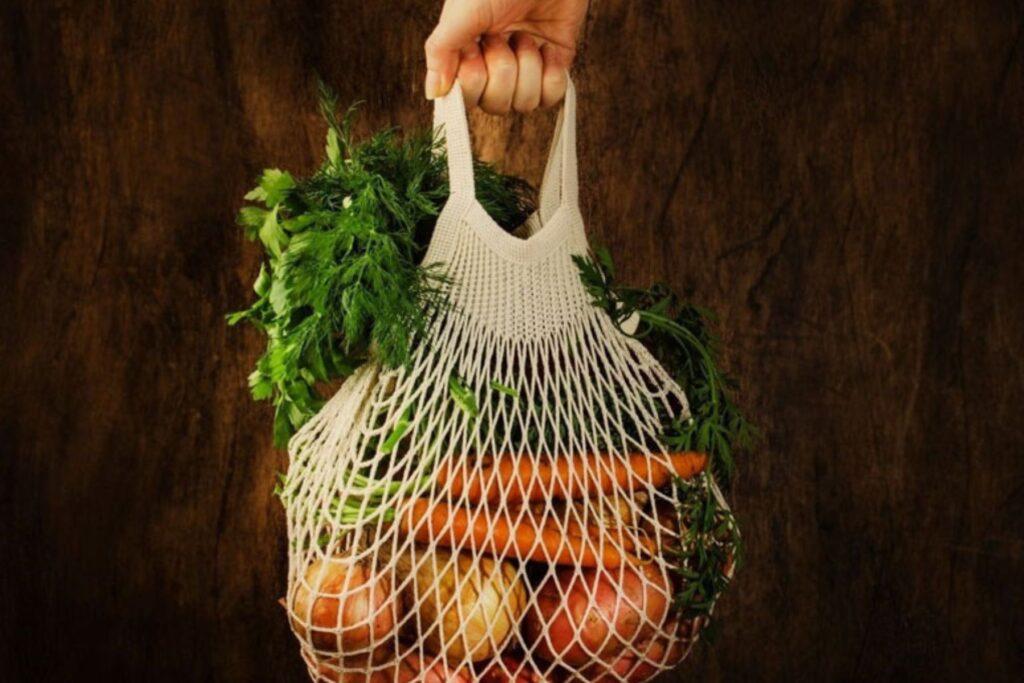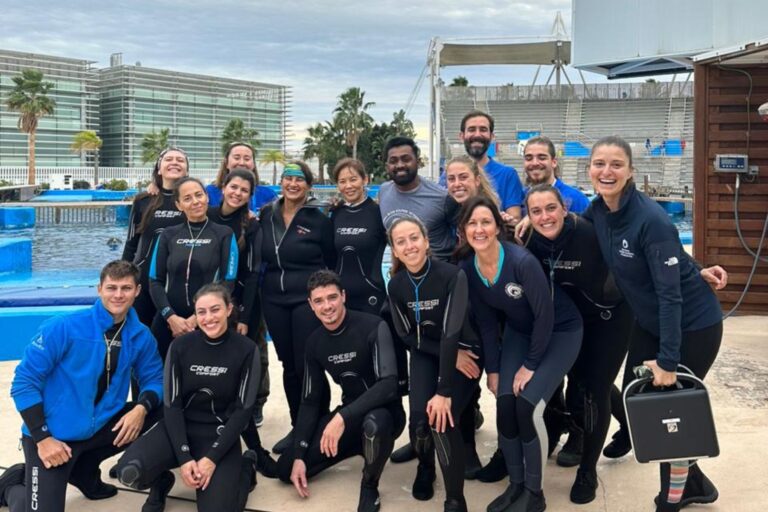Written by: Brittany Novick
Plastic Free July is an initiative of the Plastic Free Foundation Ltd., a non-profit organization founded in 2017. We hope that you see this as an opportunity to learn something new and challenge yourself to make small changes to make a big impact. Plastic pollution threatens our oceans in a number of different ways – wildlife entanglement, ingestion by marine mammals and birds, and the creation of harmful pollutants from its production. The reality – plastics are everywhere, from the deep ocean to the top of Mt. Everest, from rain water to the fish we eat. While it is so important to try to reduce your use, we acknowledge that living with less plastic is challenging. It is all around us, in so many things that we use and consume on a daily basis.
We want to start by reassuring you that reducing your plastic use is an imperfect process. It takes time to learn the best ways to shed plastic products, but that’s part of the fun! Before we start sharing some ideas with you, we want to say that going plastic-free does not mean tossing all of your plastic baggies and toothpaste containers in the trash. One of the biggest misconceptions about reducing your plastic consumption is that you immediately have to make the switch and dump everything you own to start fresh. That is wasteful and 100% not the point. When starting out, be sure to use up everything you already have and then, when it is time to replace it, consider a more sustainable option. Hopefully, these ideas will encourage you, and help you see that it is possible to take this step!
If you’re just starting out, here are some simple swaps. As you’re making these changes, try to get creative with things you may already have in your home.
- My personal favorite – Keep your glass jars. When you’re done with that pasta sauce or pickles, wash the jar and save it to store nuts and berries or even use it to drink your smoothies.
Instagram vs. Reality:


- Reusable produce and shopping bags. While you can certainly buy mesh bags online or at an in-person retailer, this is one thing you may not have to buy brand new. Many products you already purchase may come in their own fabric drawstring bag (bed sheets are one example). Give these bags a second life!
Instagram vs. Reality:


- Reusable coffee pods. Almost every make and model of single-serving coffee machines have reusable pods. Simply fill them with coffee grounds, use as normal, rinse and repeat.
- Buy secondhand, mend it or try to fix it. By trying to repair a broken coffee mug or mending a hole in your favorite pair of jeans, you are extending the life of these items and keeping them out of a landfill. By buying second hand, you are slowing down the production of new products by using items that have already been made. This means less water, less carbon emissions, and more. Plus, shopping secondhand slows the rate in which clothing is headed for a landfill.
And of course..
- Don’t forget your own reusable water bottle and travel mug. Even when traveling to amusement parks, a lot of places have water fountains for you to fill your own bottle. Save some cash while saving the planet.
If you’ve already begun your zero waste journey and are looking for some additional inspiration, here are some ideas for you.
- Get cooking. Instead of buying traditional household cleaners, try making your own with lemon, vinegar, and water – there are a lot of recipes floating around the internet. Instead of buying a plastic tub of body butter, try making your own with shea butter and coconut oil. You can also make your own body scrubs from used coffee grounds or your own facemask with honey. Get creative – the possibilities are truly endless!
- Fly green. Now that people are starting to resume travel, you can offset the carbon emissions of your flight by purchasing carbon offsets when you buy your plane ticket right there on the website – and it’s cheaper than you might think. Most carbon offset calculators will give you an estimate of $10 for a round trip flight. Additionally, you can consider going electronic and stop printing your boarding pass, and don’t forget to bring your own snacks and a reusable water bottle.
- Laundry detergent sheets. Consider using detergent sheets instead of using detergent that comes in a plastic bottle.. These sheets are zero-waste, take up less space in your home, and use less fossil fuels to transport.
And while we’re in the laundry room…
- Wool dryer balls. Consider investing in some reusable wool dryer balls to stand in for those dryer sheets that eventually just get thrown away.
- Choose natural fabrics and avoid plastic-based textiles. Did you know that some fabrics are actually made from plastics? These include nylon, polyester, and polyamide. By choosing clothing derived from cotton, wool, hemp, and silk, you can prevent microfibers (a type of microplastic) from reaching our oceans via the wastewater from your washer. And, of course, shopping secondhand or hosting a clothing swap with your friends are great options when you are looking to update your wardrobe.
And finally..
- Composting. Composting is one of the best ways that you can reduce waste in your household. When food scraps are introduced to a landfill, they are buried and break down anaerobically (without air) and, as a result, release greenhouse gasses (methane and carbon dioxide). If you don’t have access to a compost pile or bin, there are great online tutorials that teach you how to make your own. If you don’t have “green waste” pickup in your area (check your city’s waste website to learn more), you can actually freeze your food scraps and then donate them to a local farm or farmers market – even some schools have environmental clubs that compost.
- Use your food scraps. There are also a lot of uses for food scraps in cooking and other purposes. This reduces the number of packaged items you need to buy from the store. Banana peels soaked in water make great plant fertilizer. Lemon peels are great to add to homemade all-purpose cleaners. Some vegetable scraps can be frozen and used in soup broth (carrot stalks, carrot greens, celery stems, apple cores, kale stems, garlic root, herbs of any kind, and lemon and lime rinds – just to name a few). Simply take your vegetable scraps, bring to a boil with salt, pepper, and garlic for flavor. Let simmer for 30 minutes for the vegetables to release their flavor and strain. Use immediately or freeze for future use.
Small changes can add up to make a big difference. This July, and all year round, we encourage you to use these ideas, or learn new ways in which reducing plastic waste works for you and your family. By starting small and sharing your actions with your family members, friends, and neighbors, you can make a huge impact. Reducing, repurposing, and reusing can be incorporated into the rest of your year, beyond Plastic Free July, so these changes become permanent!
In addition to supporting ongoing efforts like Plastic Free July, we offer our signature educational workshop focused on preventing ocean plastics, POP for a Porpoise. You can learn more about our POP program here. If your organization, community group, or classroom is interested in a virtual POP workshop, contact us.





